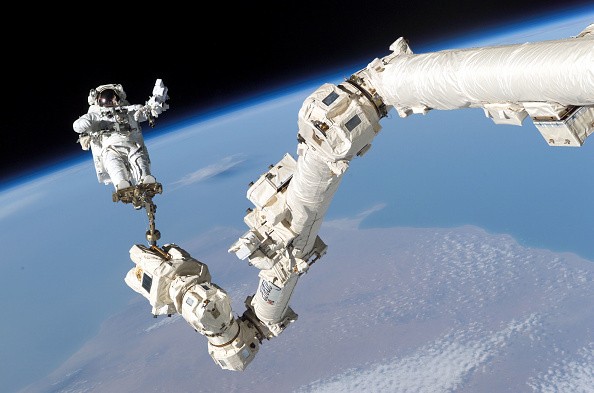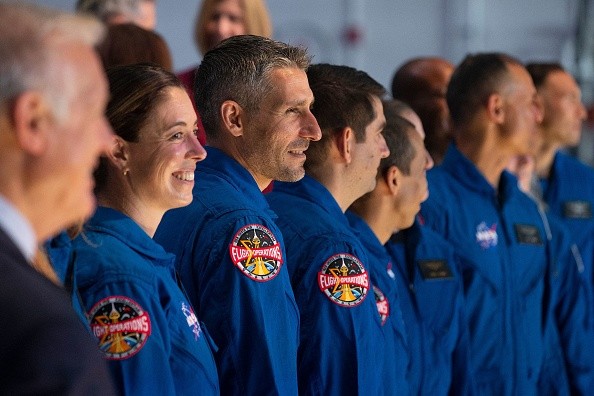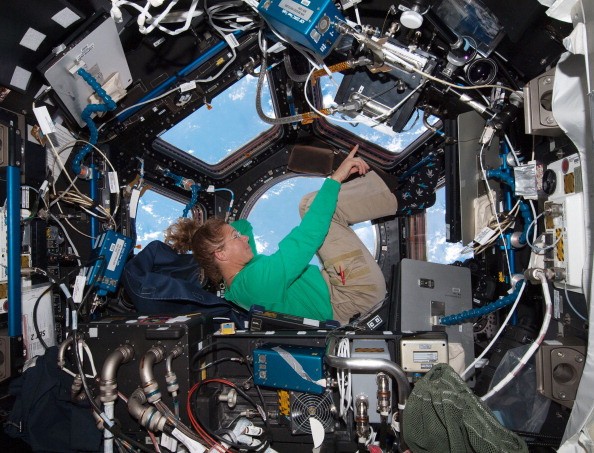NASA astronaut.

Now that's a job that so many young kids tend to want early on in life, mainly because of the inherent prestige that comes with it. You get to go on a spaceship, go to space, conduct life and world-changing experiments in zero-gravity-those are the things that just put normal folks in awe.
But to become part of this elite group, you also have to be aware of the elite requirements to become one. The selection process alone is one of the most, if not the most, competitive in the entire world. According to Discover Magazine, NASA's 2017 astronaut search had them pick just 12 people from a total of 18,300 applicants. This resulted in a microscopic success rate of 0.07%.
By doing the math, this number reveals that every single person who applied for the 2017 NASA astronaut program had a 0.0007% chance of becoming an astronaut by the end (thanks, CalculatorSoup).
However, the agency says that things aren't quite what they seem. When it used to be that folks would assume NASA only picks what amounts to people with superhuman intelligence or skills, astronaut Mike Barratt says that the main goal with the selection is to just pick well-rounded, well-behaved professionals who showcase adaptability and resilience. That's it.
This topic is becoming even more important now, as NASA has revealed that there's an "astronaut shortage" ahead of the Artemis mission's first crewed moon launch. So, do you think you have what it takes? Read on.
Picking NASA Astronauts With 'The Right Stuff'
Out of a sea of applications, the screening group of NASA does have a few non-negotiable requirements. Speaking to National Geographic, astronaut selection manager Anne Roemer said that they're looking for folks with specific qualities.
First off is the simplest: a master's degree. Back in the 2019 application period, people who applied to become NASA astronauts were preferred to have at least a Master's degree. But by the following year, the agency has now made Master's degrees a requirement, considering how they never really hired a Bachelor's degree holder in past astronaut classes.

Read Also : NASA's Astronaut Breaks Record for Longest Stay in the ISS; Mark Vande Hei Finally Coming Home
Aside from an advanced degree, the agency also requires people who exhibit immense grace under pressure. As you should know, being an astronaut requires you to work in a super stressful environment-far harder on your psyche than just handling office co-worker drama. You're in outer space (or even a new planet like Mars) for pete's sake, so you need to be mentally tough.
By "mentally tough," NASA astronauts need to have hands-on, actual experience with multiple situations where they had to make quick decisions under immense stress. As such, anybody who works in jobs that involve search and rescue (i.e. firefighters) or others such as wilderness explorers almost always have a leg up on their peers.
Lastly, the agency also looks for people with excellent interpersonal skills. Being an astronaut will always, always require you to work with a team. You'll also be tasked with leading a team, and you'll all do this under stress. Roemer sums it all up with these questions: "Could I be locked up in a tin can in outer space for months, even years on end with this person, and trust my entire life in their hands?"

Astronaut Training
Assuming you have all the qualities described above, you can now look forward to astronaut training if you get selected. All candidates get trained at the Johnson Space Center in Houston, according to Britannica.
There, they receive instruction in spacecraft and space station systems, navigation, astrophysics, and everything else related to science and technology. Former astronaut David M. Brown sums it up by saying, "The great thing about being an astronaut is you kind of get to do a little bit of everything." So with astronaut training, expect yourself to come out a true Jack of all Trades when it comes to STEM.
Aside from that, astronauts get trained to move in Zero-G by donning spacesuits and taking a dip in a pool, as well as high G forces. The latter is done by strapping candidates inside a centrifuge machine, with NASA's contraption located at the Ames Research Center in Mountain View, California.
A centrifuge machine simulates the high G forces (high levels of acceleration) that astronauts will experience as they ride rockets into space. The machine does this by spinning very, very, very fast (around 50 miles an hour, writes NBC News).
An astronaut candidate's tolerance to these G forces is tested to ensure that they don't pass out as they're being launched into orbit. As you can see, passing out in space is not really a good thing: you're thousands of miles above the nearest healthcare facility, after all.
Here's what it looks like inside a centrifuge machine as it spins. Notice the faces of the trainees:
Of course, the centrifuge machine is just one of many more training gadgets that NASA astronauts use to prepare themselves for space. But this is just a taste of what you'll have to go through as a candidate for two full years.
Do You Have What It Takes?
NASA, alongside other space exploration organizations, will be at the forefront of several of history's biggest missions since the Apollo program. Within the next few years, we'll see humans land on the moon again. And within the next few decades, we might see a man (or woman) set foot on Mars. If you want to be part of history, this is what you'll need to be.
Related Article : Astronauts' Space Flights Likely to Cause 'Space Anemia' Once They Get Back to Earth
This article is owned by Tech Times
Written by RJ Pierce
ⓒ 2025 TECHTIMES.com All rights reserved. Do not reproduce without permission.


![Best Gaming Mouse For Gamers With Smaller Hands [2025]](https://d.techtimes.com/en/full/461466/best-gaming-mouse-gamers-smaller-hands-2025.png?w=184&h=103&f=6fd057ef777bd39251d4e7e82e9b23f1)

